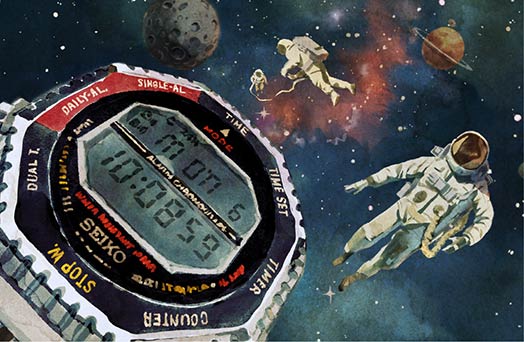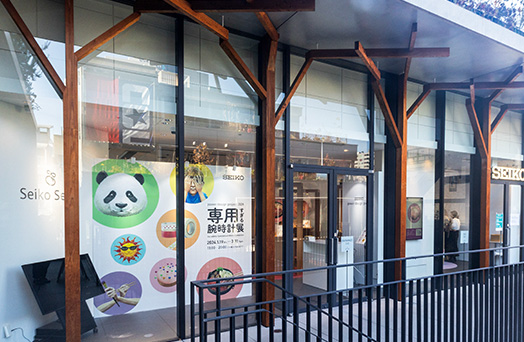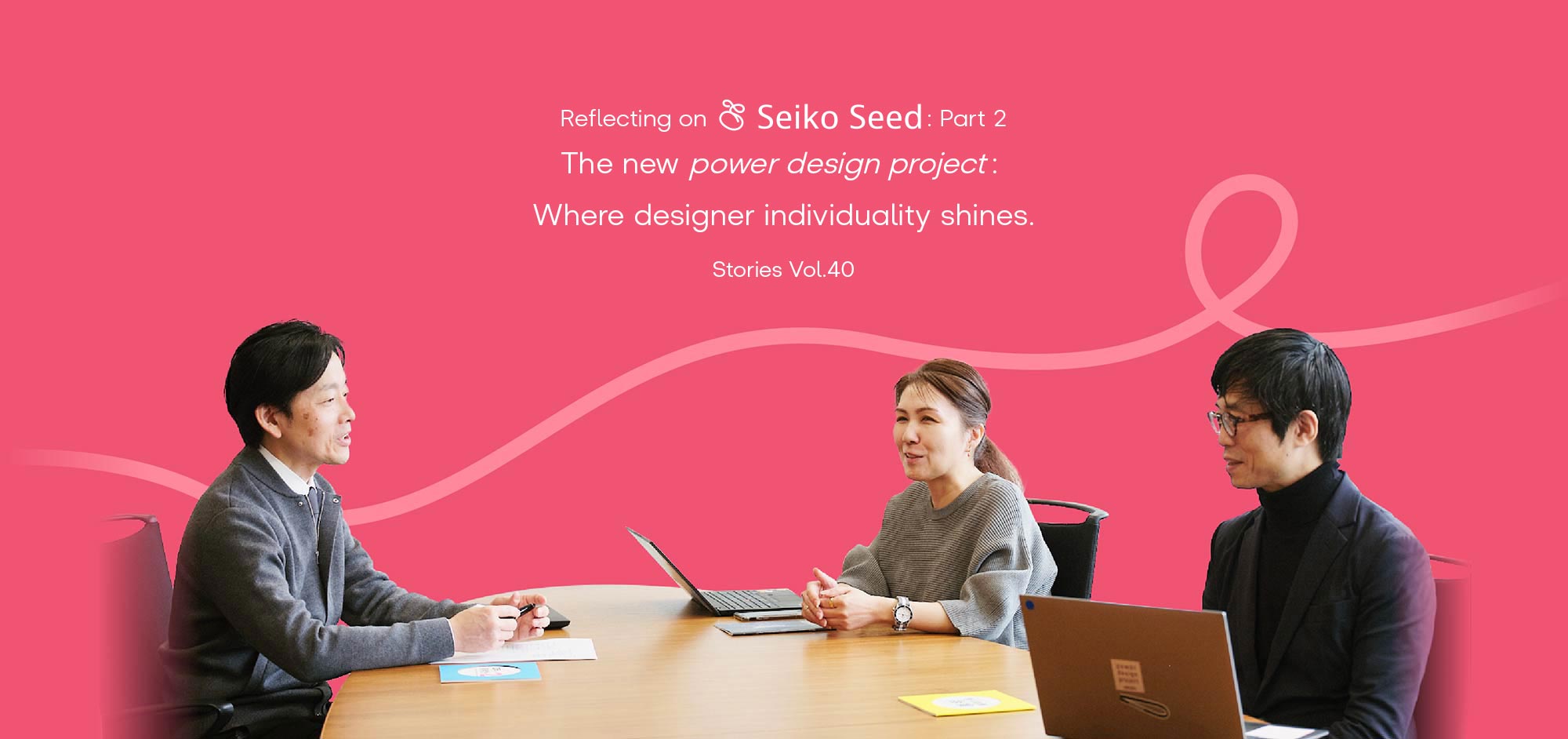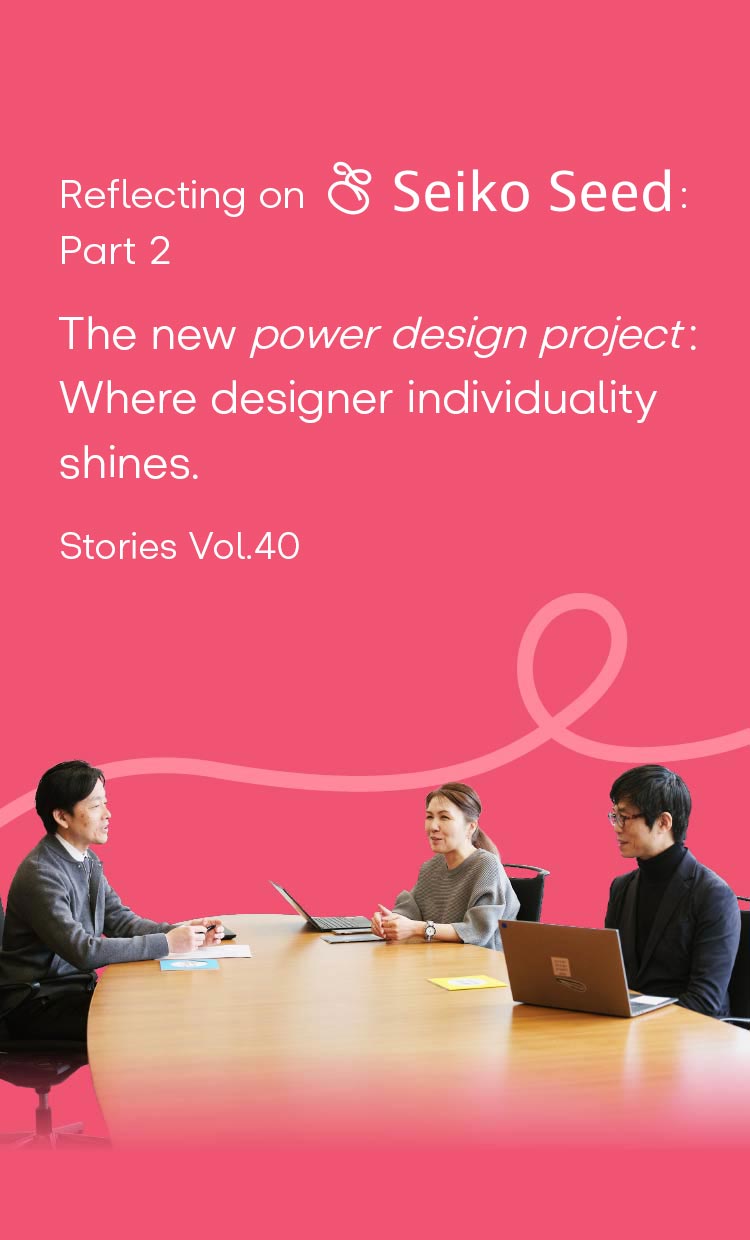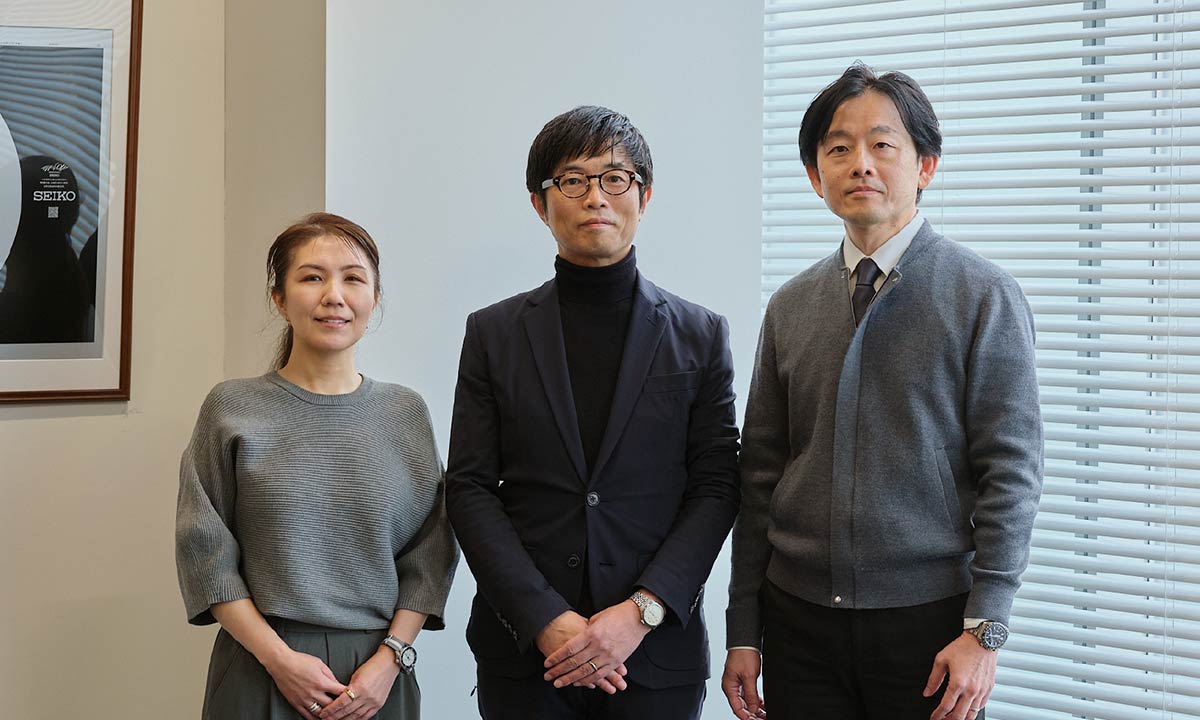
Handa joined Seiko in 2002. She supervised the REBIRTH exhibition at Seiko Seed. She currently serves as design director for Seiko 5 Sports.
Shinichiro Kubo
Kubo joined Seiko in 1999. He supervised the Incredibly Specialized Watches Exhibition at Seiko Seed. He currently serves as design director for Grand Seiko.
Junichi Kamata
Kamata joined Seiko in 1996. He supervised the Incredibly Specialized Watches Exhibition 2 at Seiko Seed. He currently serves as design director.
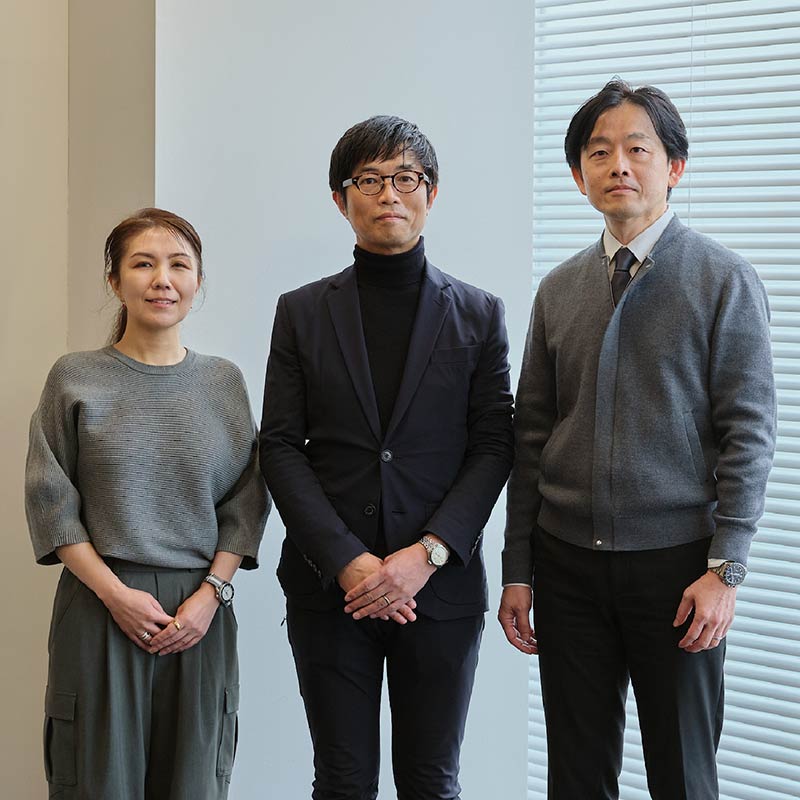
Handa joined Seiko in 2002. She supervised the REBIRTH exhibition at Seiko Seed. She currently serves as design director for Seiko 5 Sports.
Shinichiro Kubo
Kubo joined Seiko in 1999. He supervised the Incredibly Specialized Watches Exhibition at Seiko Seed. He currently serves as design director for Grand Seiko.
Junichi Kamata
Kamata joined Seiko in 1996. He supervised the Incredibly Specialized Watches Exhibition 2 at Seiko Seed. He currently serves as design director.
Revival of a historic project after 13 years
Kamata: The power design project was last held in 2009—so this was its first revival in 13 years?
Handa: At first, we had only decided to “hold a design exhibition” within Seiko Seed, and there was some discussion about whether or not to do it under the power design project name. I wasn’t sure how many people still remembered the project. However, given its long history, we felt it was important to carry forward the significance and concept of the exhibition—so we decided to revive it as the power design project.
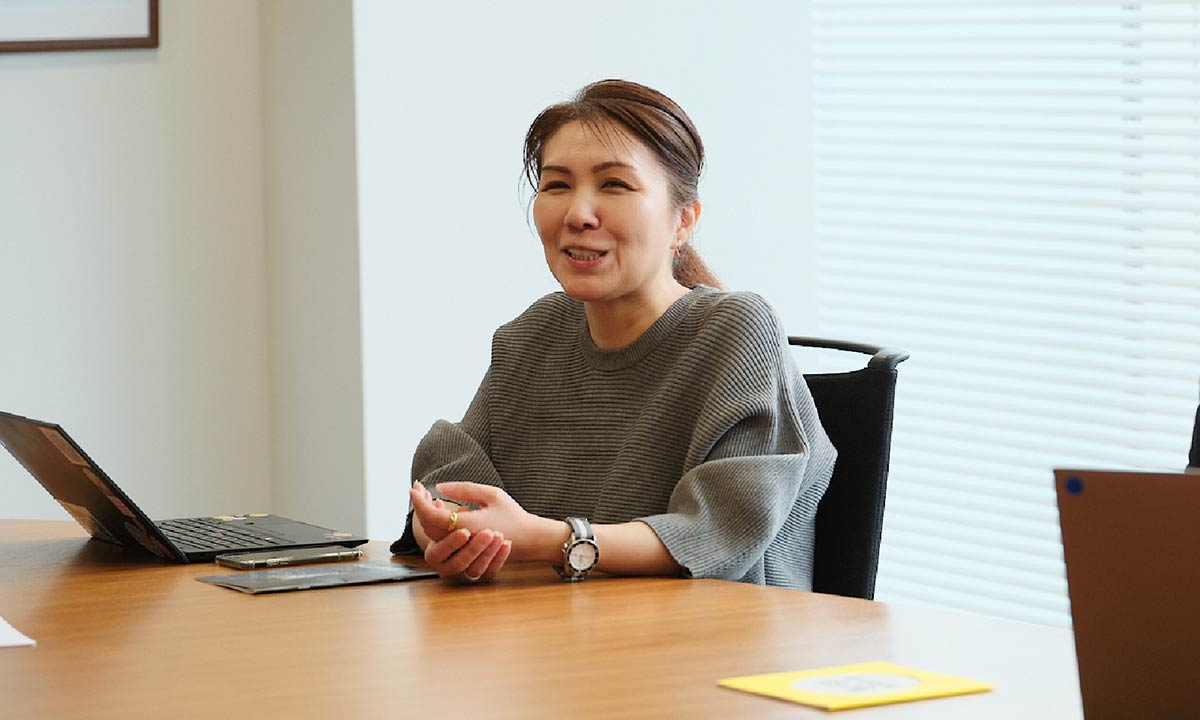
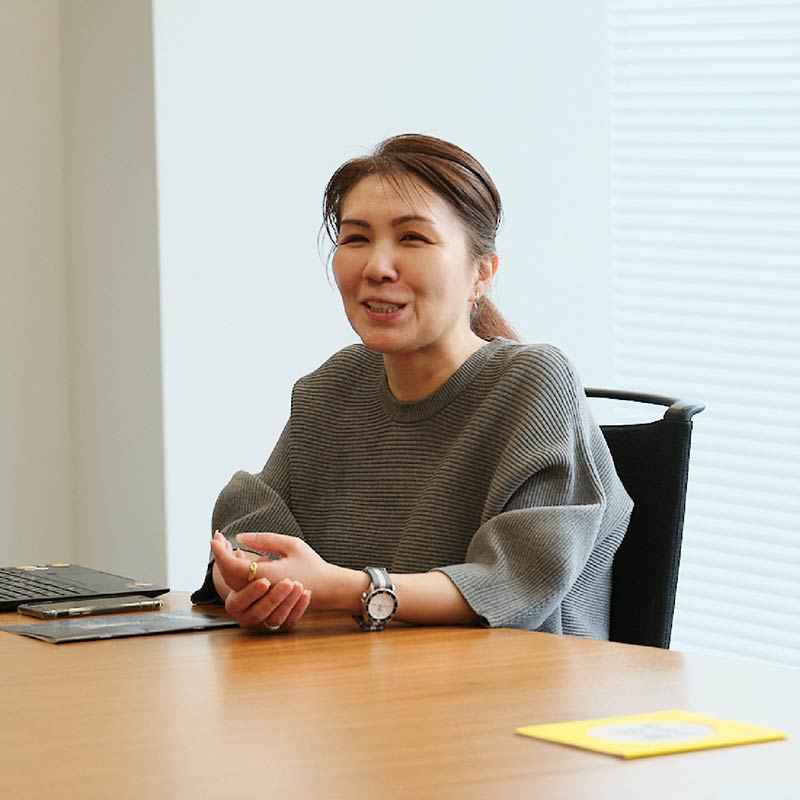
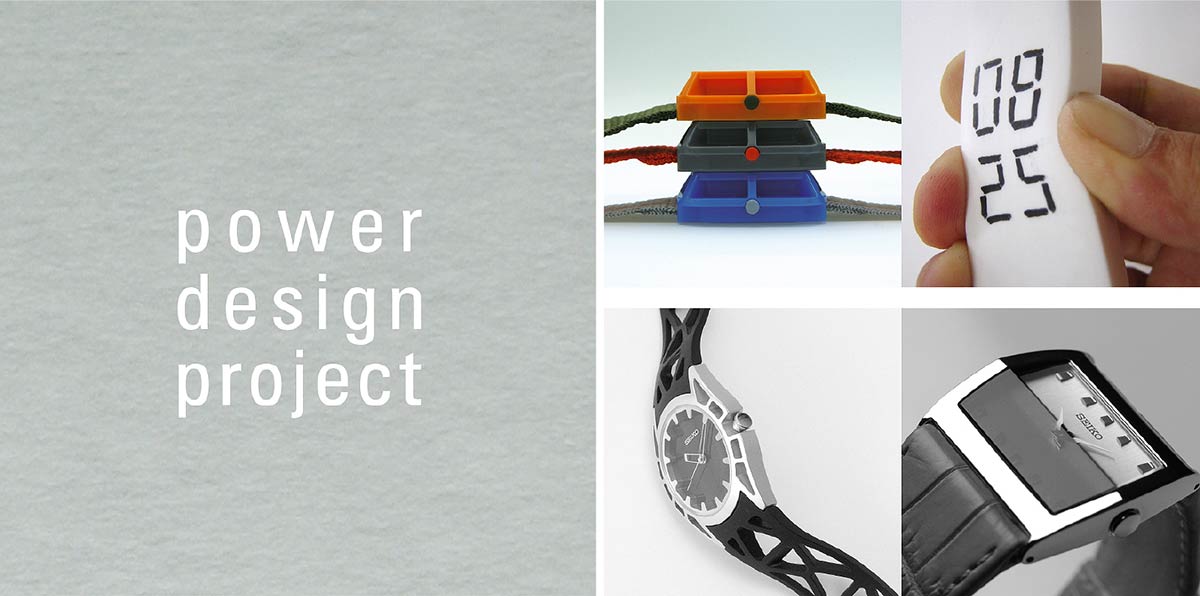
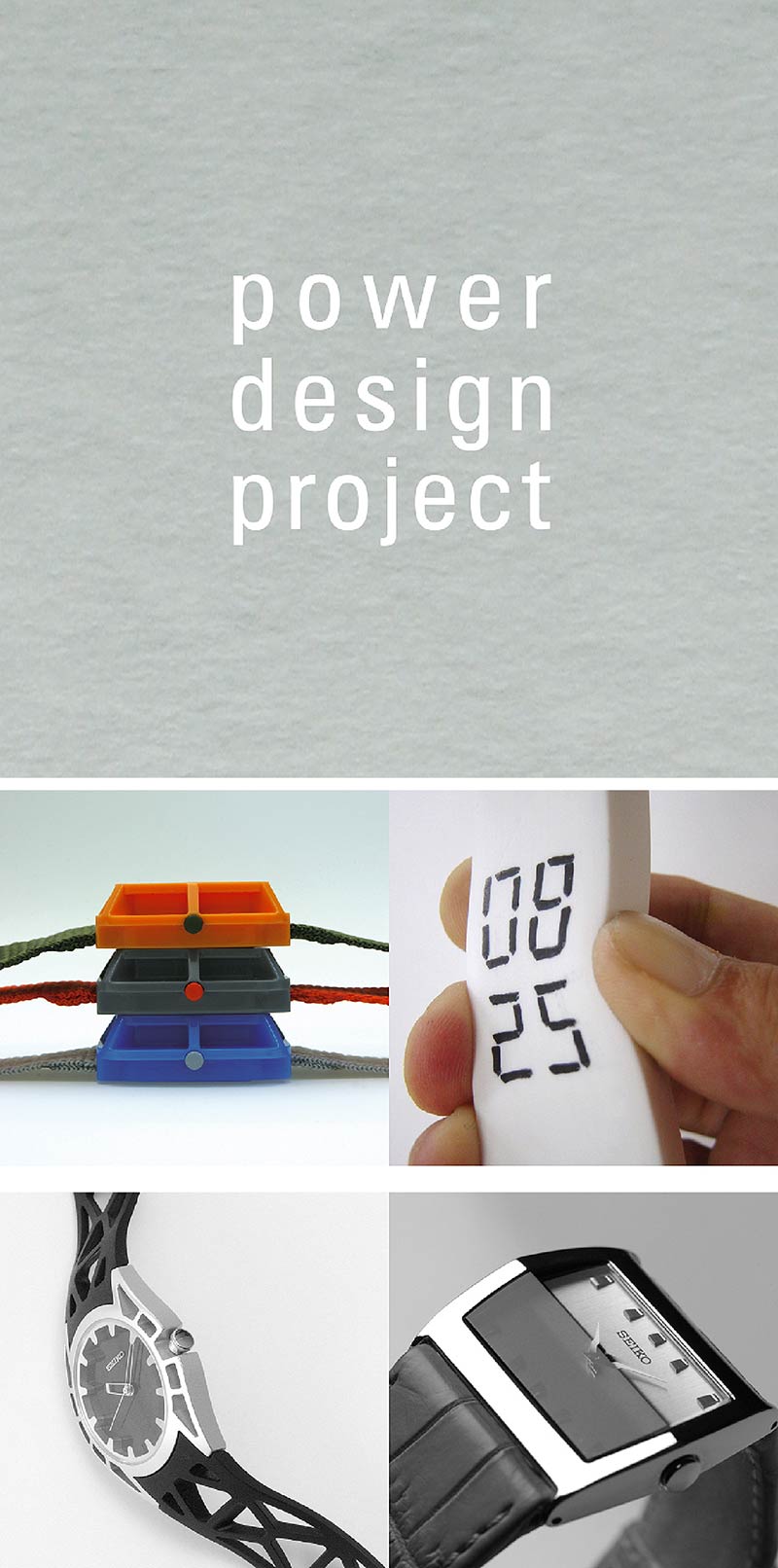
Kubo: We didn’t change our core concept of “creating a place for experimentation that gives power to the future” or “a place for education and training in design and ideas.” However, unlike previous exhibition projects, rather than inviting outside creators, for this revival everything was done in-house, right?
Handa: Yes. The first exhibition was REBIRTH, followed by the Incredibly Specialized Watches Exhibition, and then its sequel, Incredibly Specialized Watches Exhibition 2, each of which received a significant response.
The challenge of turning experimental ideas into actual devices #REBIRTH
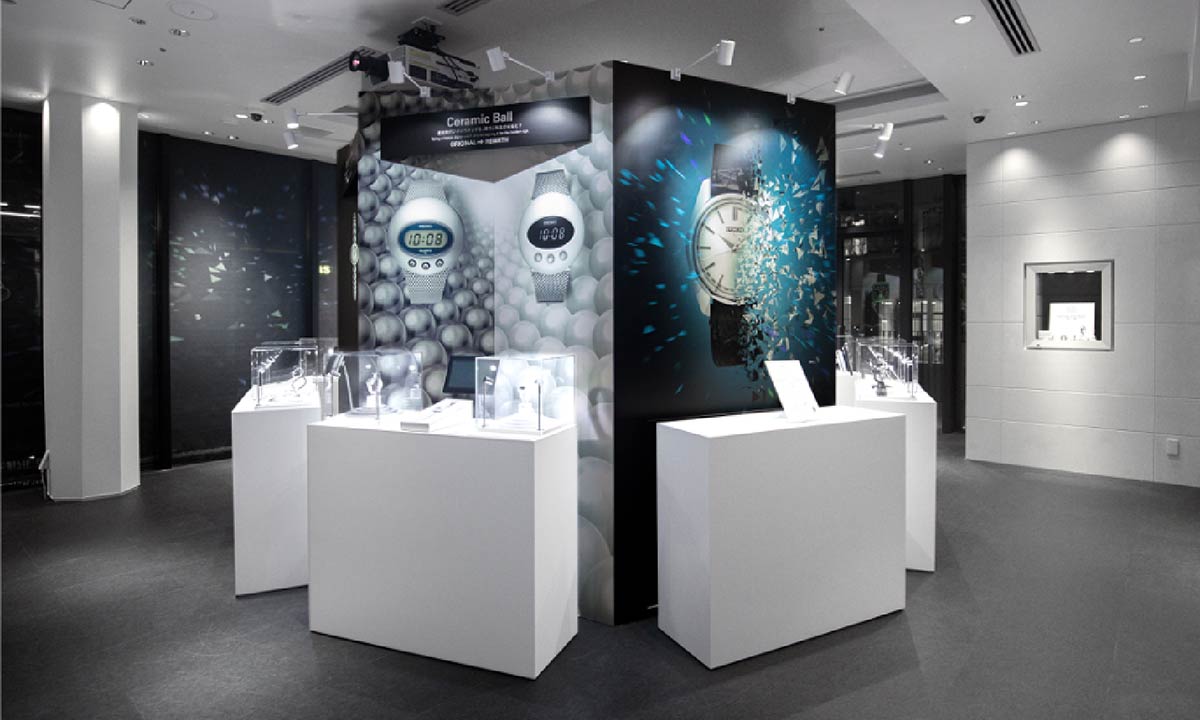
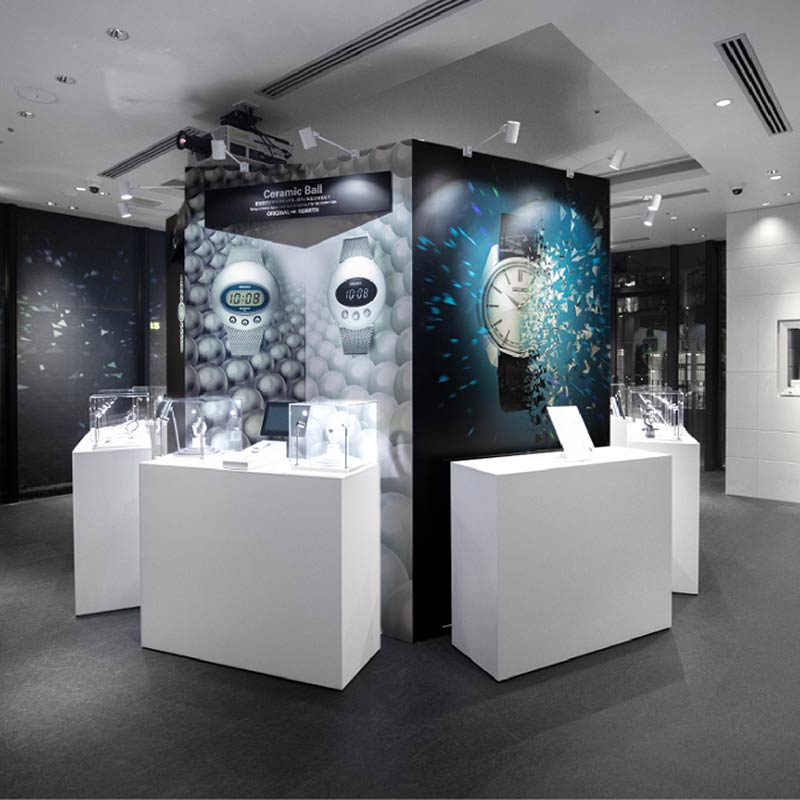
Handa: The theme I was responsible for, REBIRTH, asked the question: what would it be like if the distinctive products and technologies developed throughout Seiko’s long history were reinterpreted with a modern perspective? That was the core of the project. Although there were other theme candidates, I felt this one best aligned with the purpose of the power design project.
Kamata: It’s definitely challenging to rediscover the original strengths of watches, reinterpret them in our own way, and connect them to modern values. At the same time, it provides a valuable opportunity for designers to engage deeply with historic models from the past.
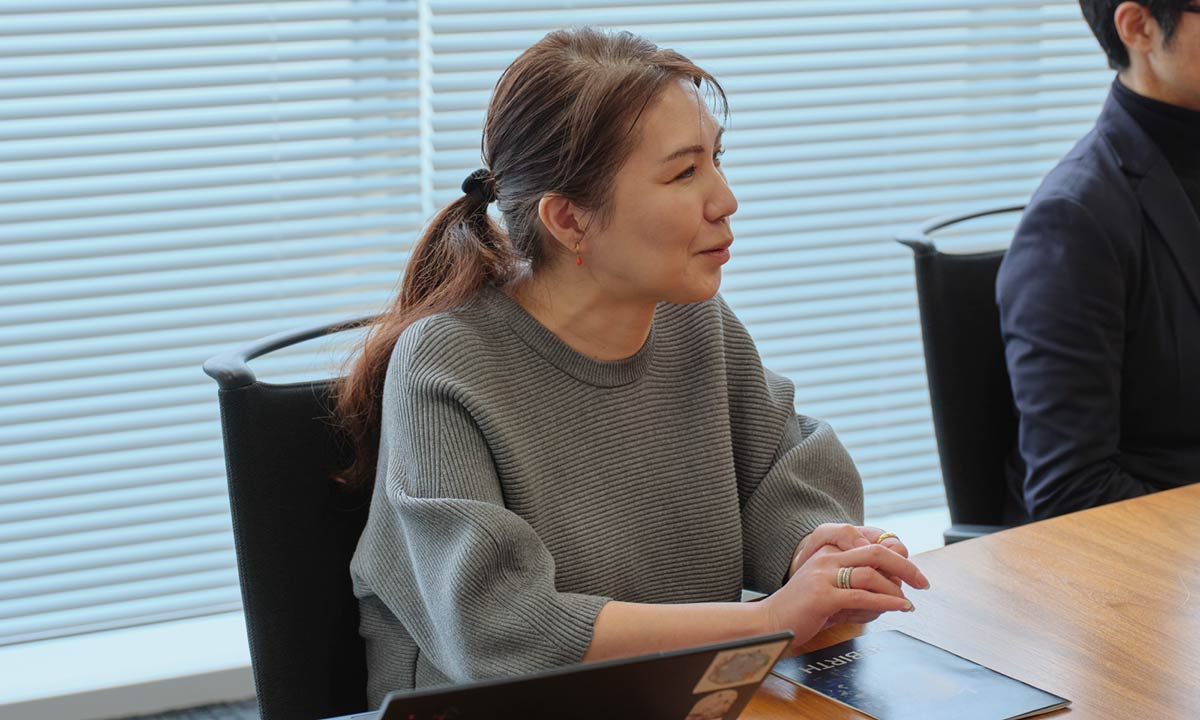
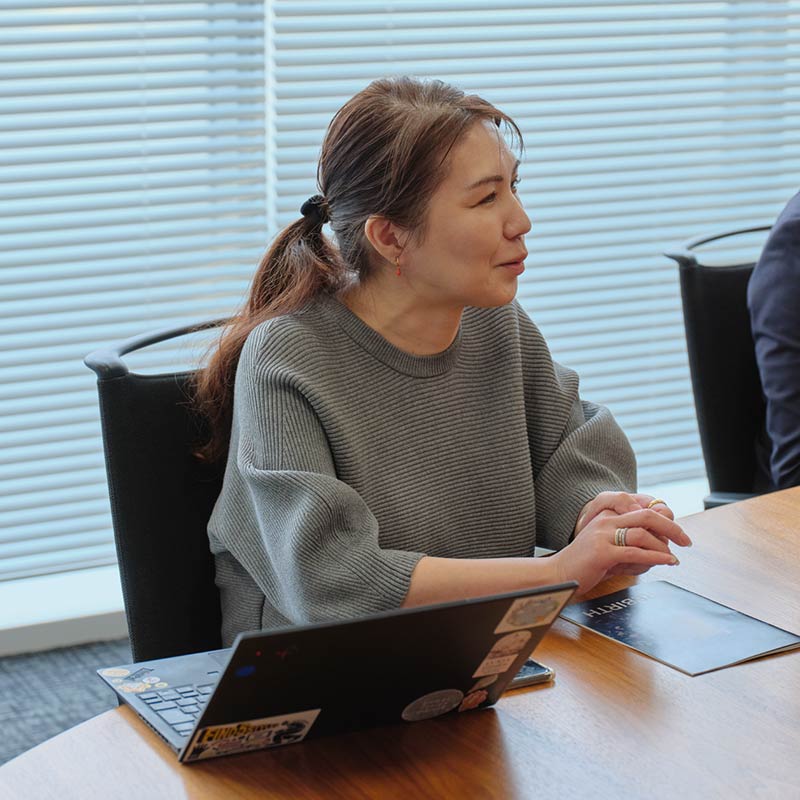
Kubo: What was the reaction when you presented the theme to the designers?
Handa: Starting with this first session, we established a rule that the watches had to be actual devices—something that actually works. I think the surprise and confusion about that requirement were even greater than reactions to the theme itself.
Kamata: In past power design projects, the watches were made as samples, so there was no need for them to function, right?
Handa: Exactly. But in 2022, during the exhibition period, the impact of COVID-19 was still significant, and the hurdle for visitors to come to the venue was higher than ever. Because of that, I felt it was important to offer something truly attractive—like allowing visitors to touch and wear a fully functioning watch—giving them a compelling reason to make the trip to the exhibition.
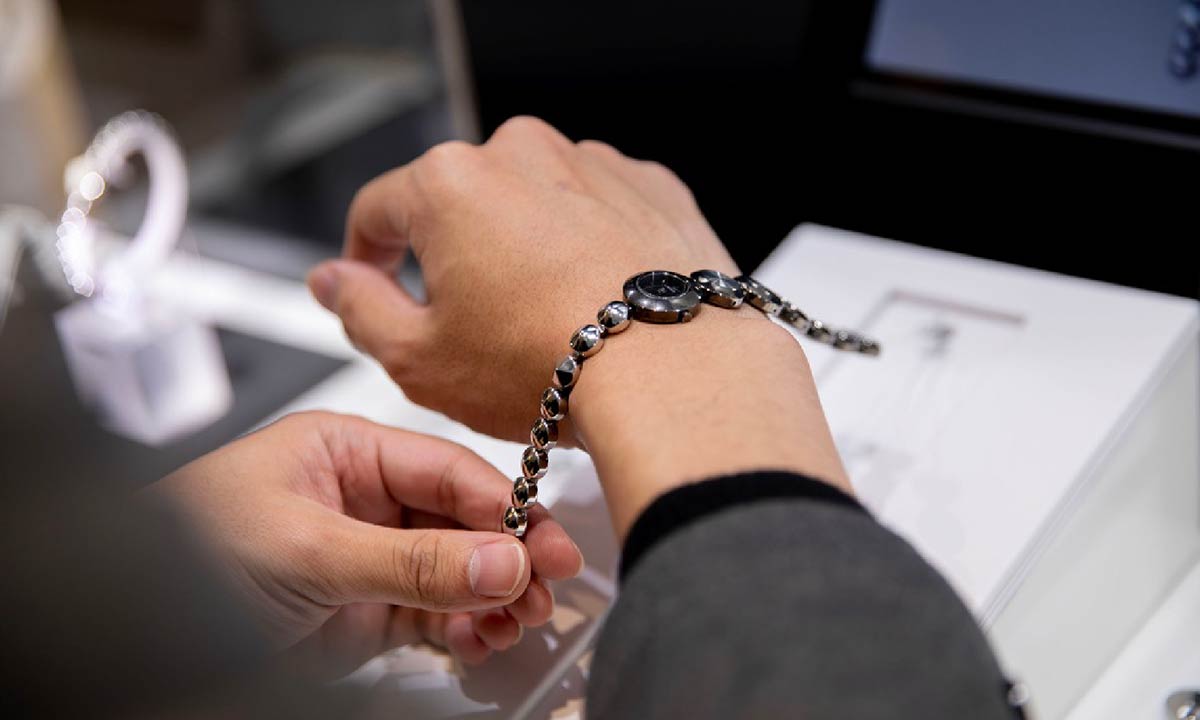
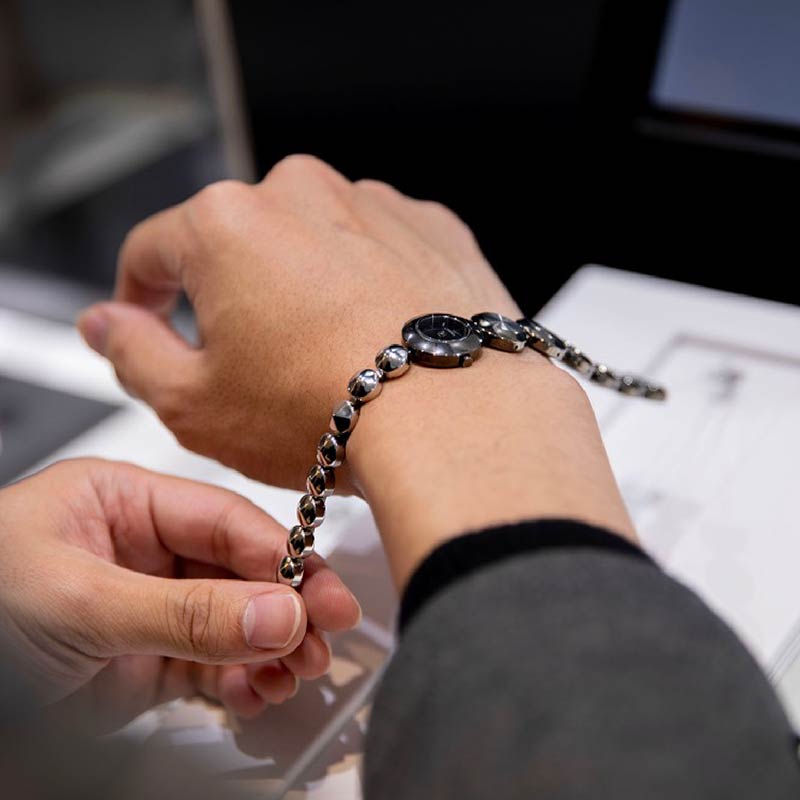
Kubo: If you simply tell visitors, “Please don’t touch the watches on display,” then even the most delicate designs can be showcased. But this time, we had to create watches that could withstand being worn, handled, and having their buttons pressed—so the challenge was on a completely different level.
Kamata: Among the watches that cleared those hurdles, which ones were especially well received?
Handa: That would be Radiant Time, which also served as the symbol of the exhibition. I think one reason it was so popular is that visitors could listen to explanations about the exceptional Zaratsu polishing technique while actually touching and closely observing the sparkling watch—the kind of experience only possible to have in-person at the venue.
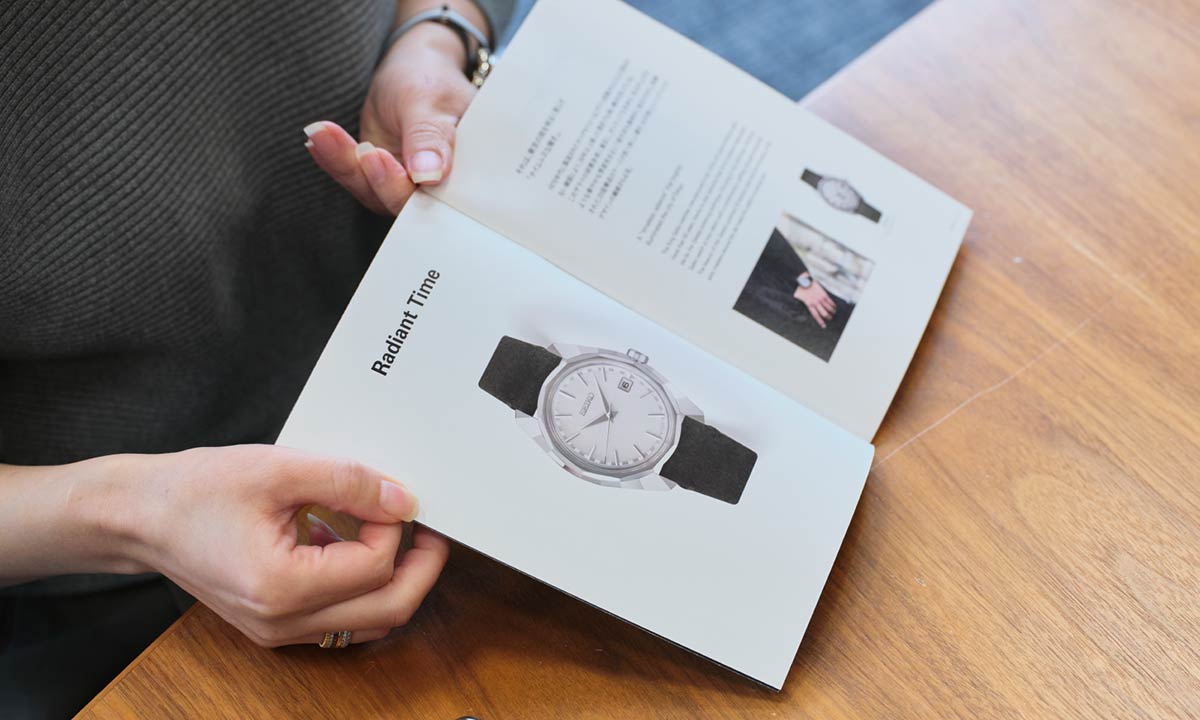
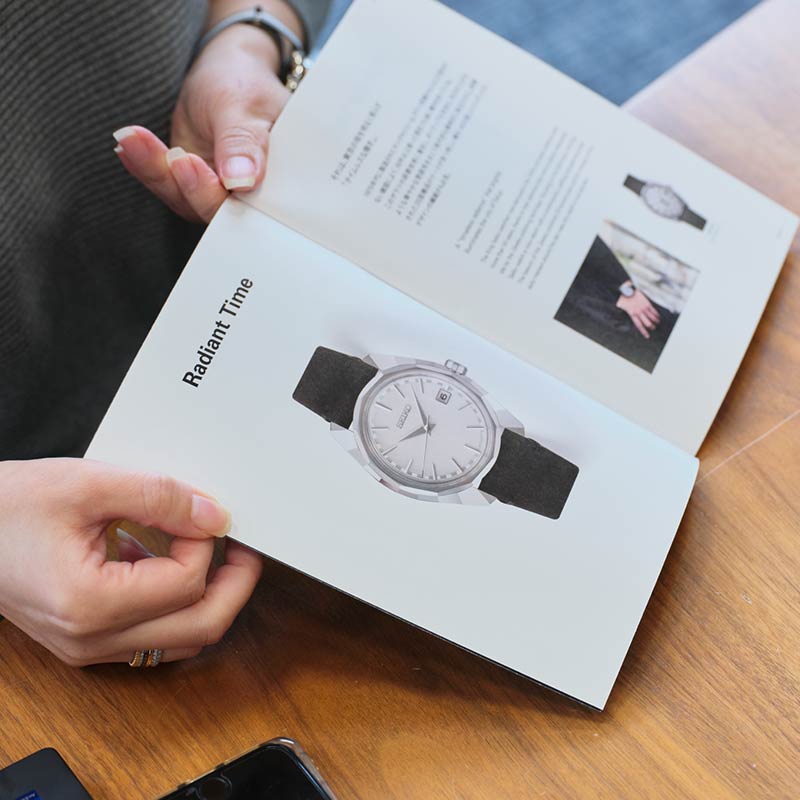
A single entry inevitably reveals the designer’s personality. #IncrediblySpecializedWatchesExhibition
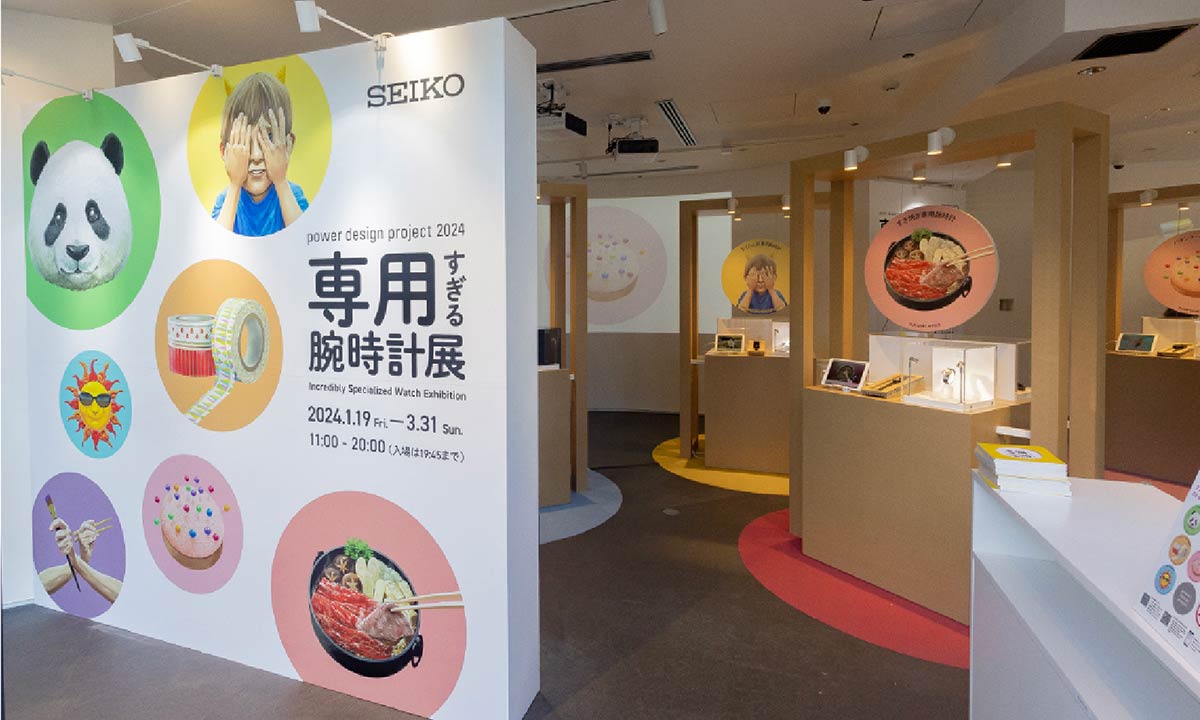
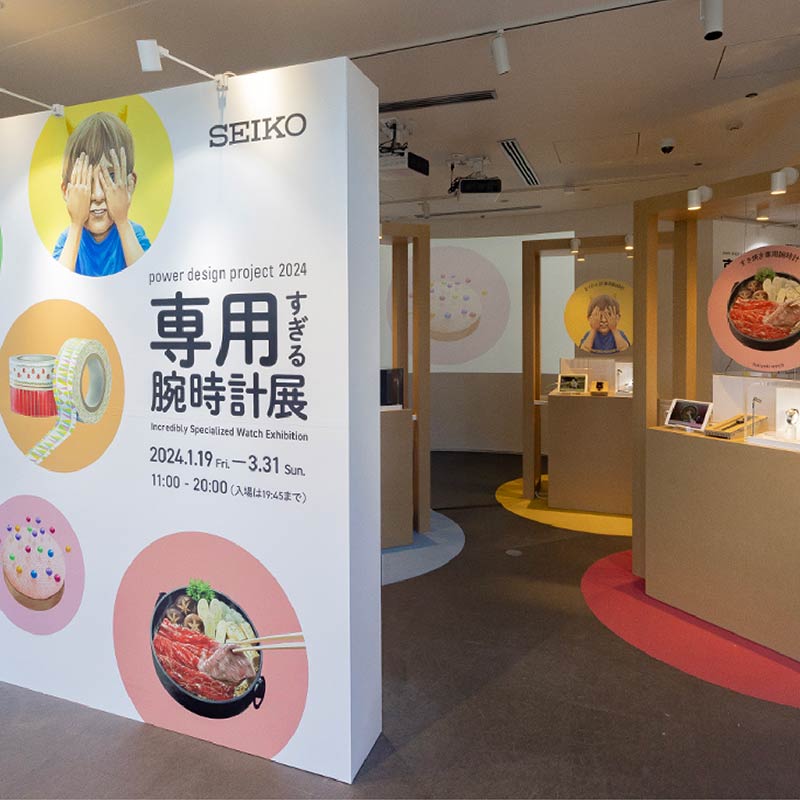
Handa: How did you decide on the theme of the Incredibly Specialized Watches Exhibition?
Kubo: Nowadays, there are so many devices with multiple functions.
Handa: Smartwatches are a perfect example of that.
Kubo: Exactly. Compared to those, the watches we work with have almost no functions beyond telling the time. So, we decided to embrace that and focus on the fact that they excel at doing just one thing.
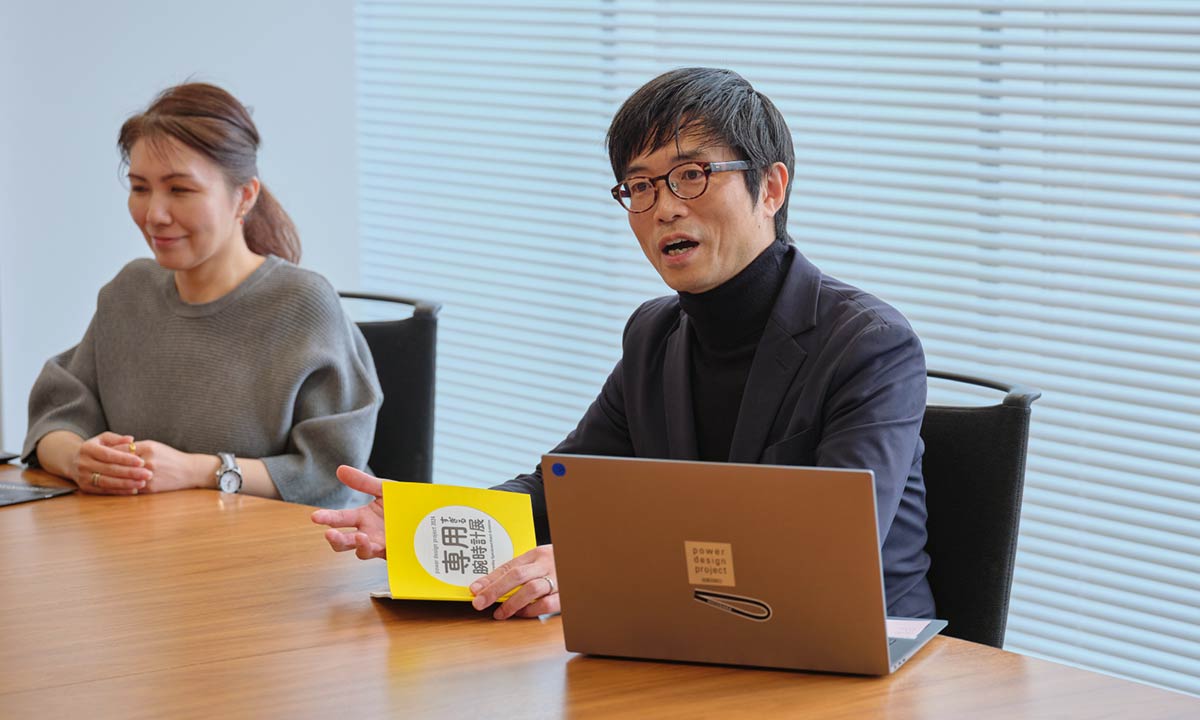
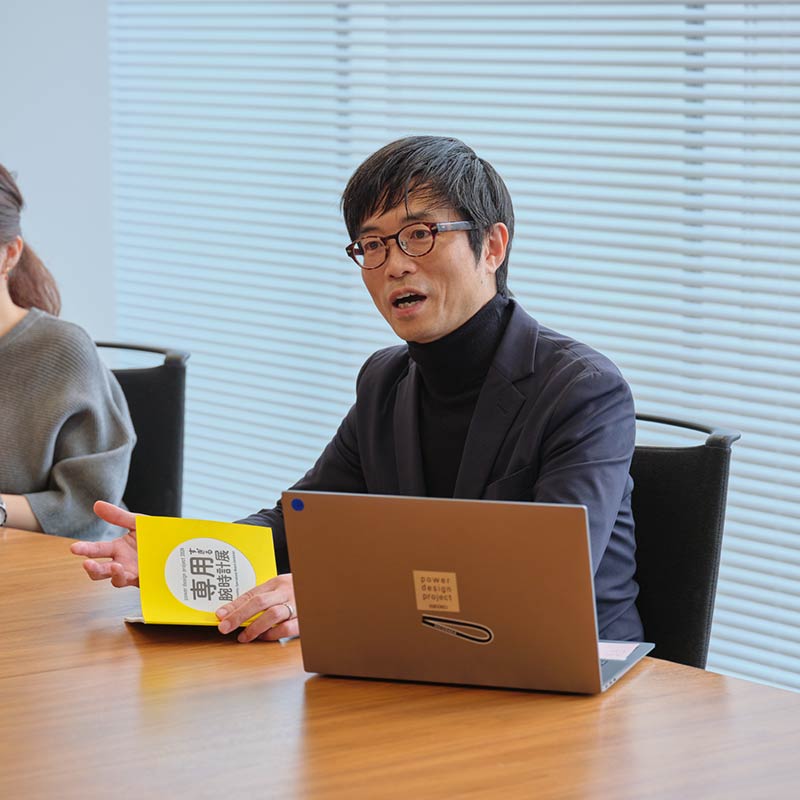
Kubo: I think it’s hard to put your heart into something that tries to do everything. But if an item has a single, focused function, you can truly pour your passion into it. Take a carpenter’s hammer, for example—it’s only made to hammer nails. Yet, when the carpenter finishes his work, he carefully polishes each tool before heading home. That’s one way to show love for what you use.
Kamata: That idea inspired us to create watches that are incredibly specialized for a single purpose.
Kubo: I told the designers, “We welcome ideas that go all out!” Usually, when working on regular products, we design with clear goals and boundaries in mind and, for better or worse, we become accustomed to that way of thinking. So I reassured them that even ideas that might make them wonder, “Is it really okay to release something like this?” were acceptable. But I also emphasized that it had to be a full-swing effort—no holding back.
Handa: A lot of unique ideas came out of that, didn’t they? How many proposals did you get?
Kubo: We received 46 proposals. Actually, some ideas that weren’t selected then were revived for Incredibly Specialized Watches Exhibition 2, right?
Kamata: Exactly. In some cases, the core concepts remained practically the same, but the designers persisted in developing and refining their ideas. You could really feel their determination.
Kubo: I believe what matters most for designers is having a strong will and individuality. That’s especially clear in unconventional themes like this, and it directly affects the quality of the design.
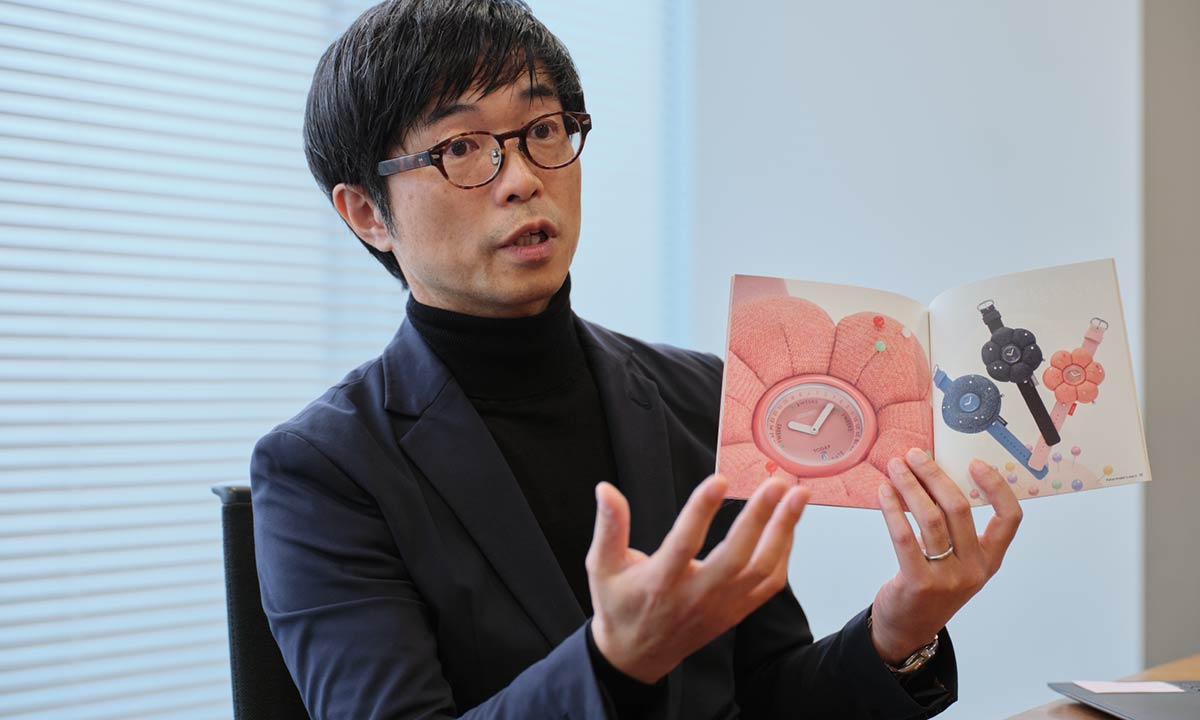
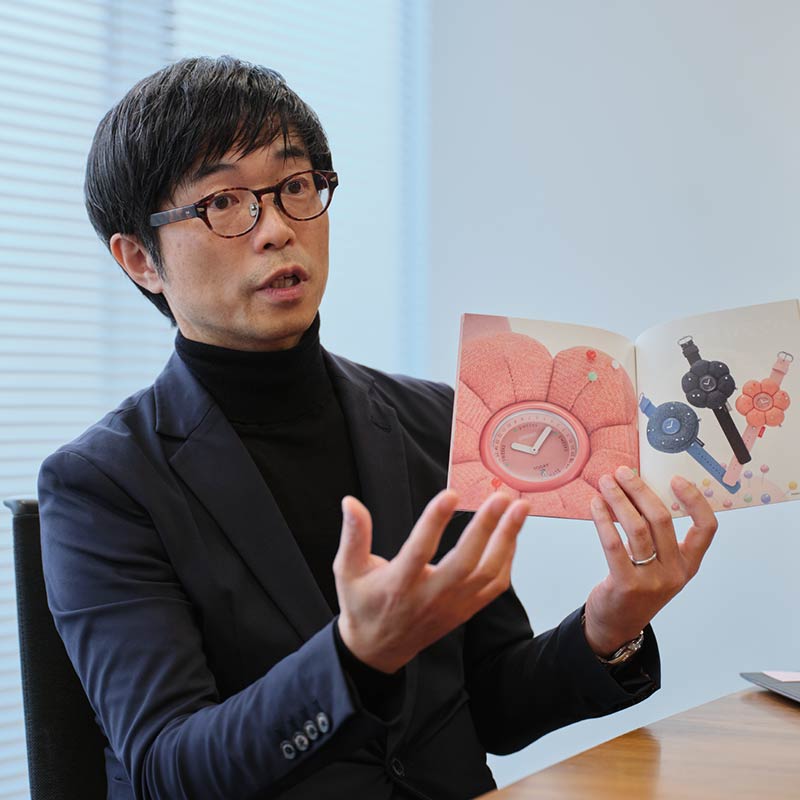
Kubo: Take the Watch Exclusively for Masking Tape Enthusiasts, for example. It was designed in that specific shape because the designer personally understood what masking tape enthusiasts truly value. Looking at each design individually, you can sense how deeply it reflects the designer’s way of thinking. It was fascinating to discover how much their personal perspectives shaped the final forms.
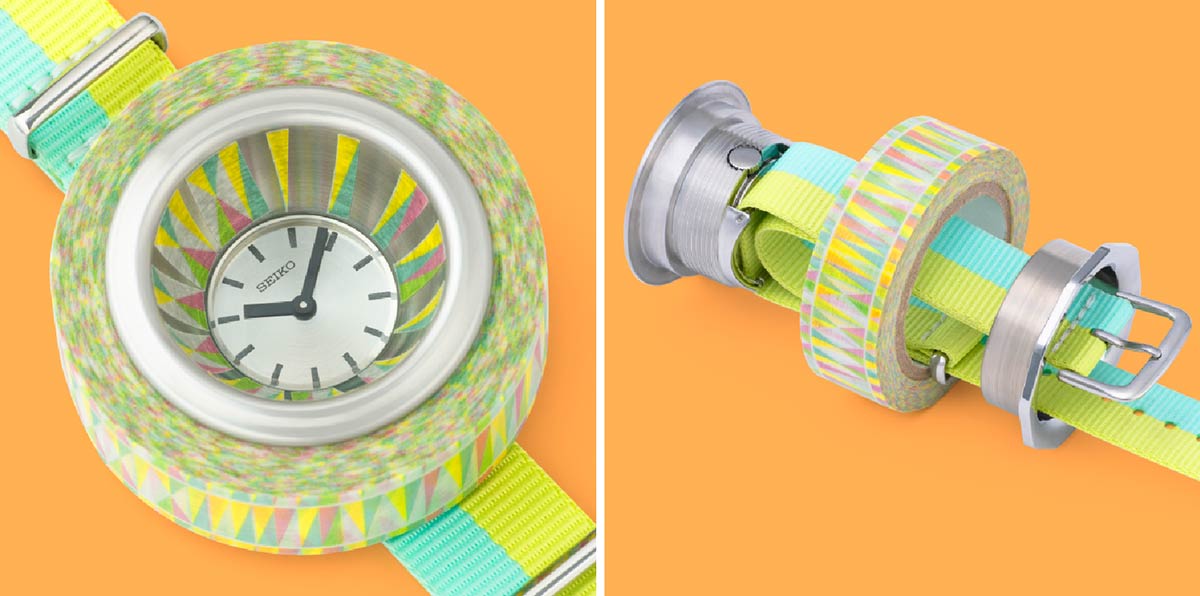
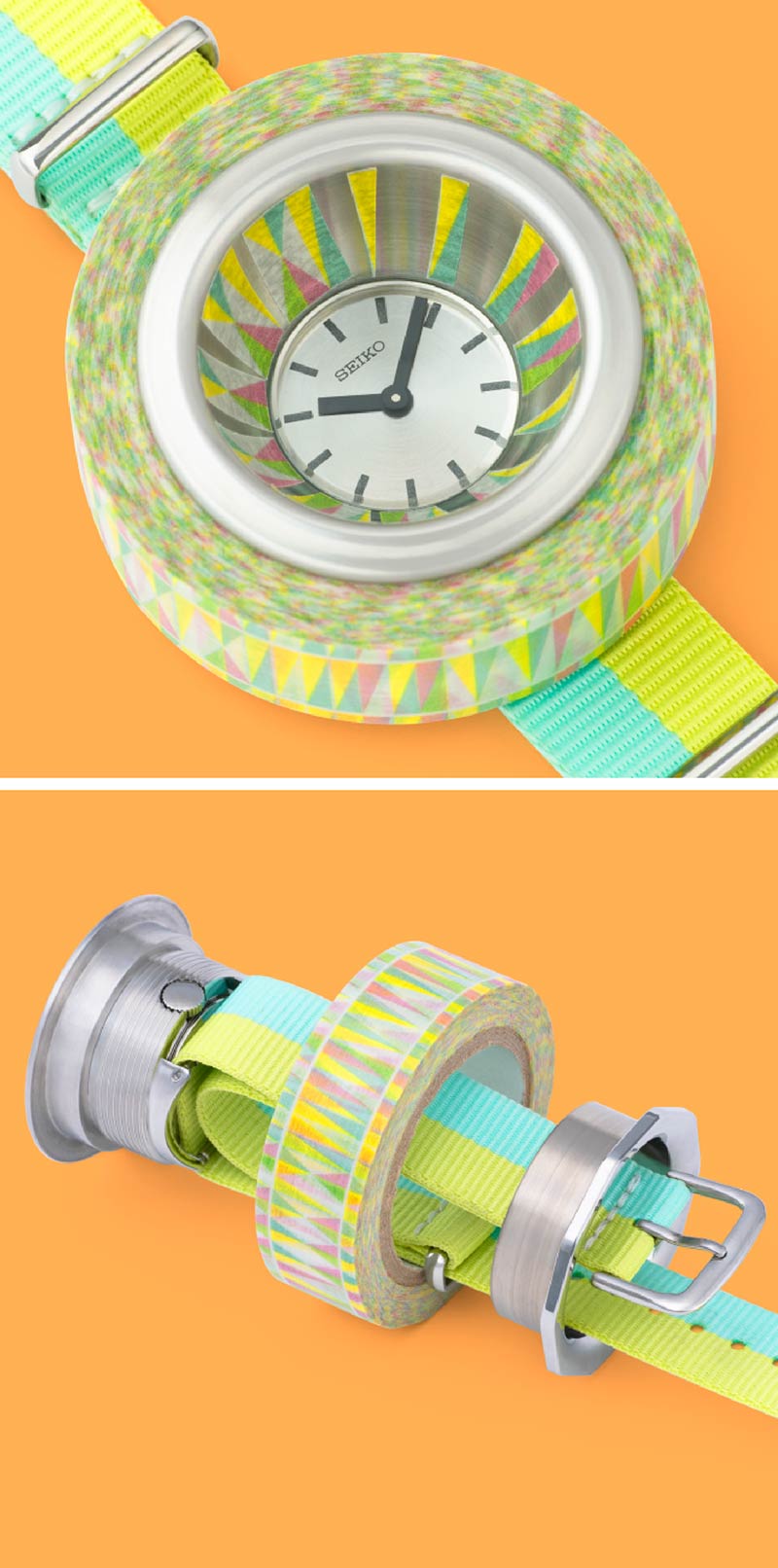
Theme first or vision first? #IncrediblySpecializedWatchesExhibition2
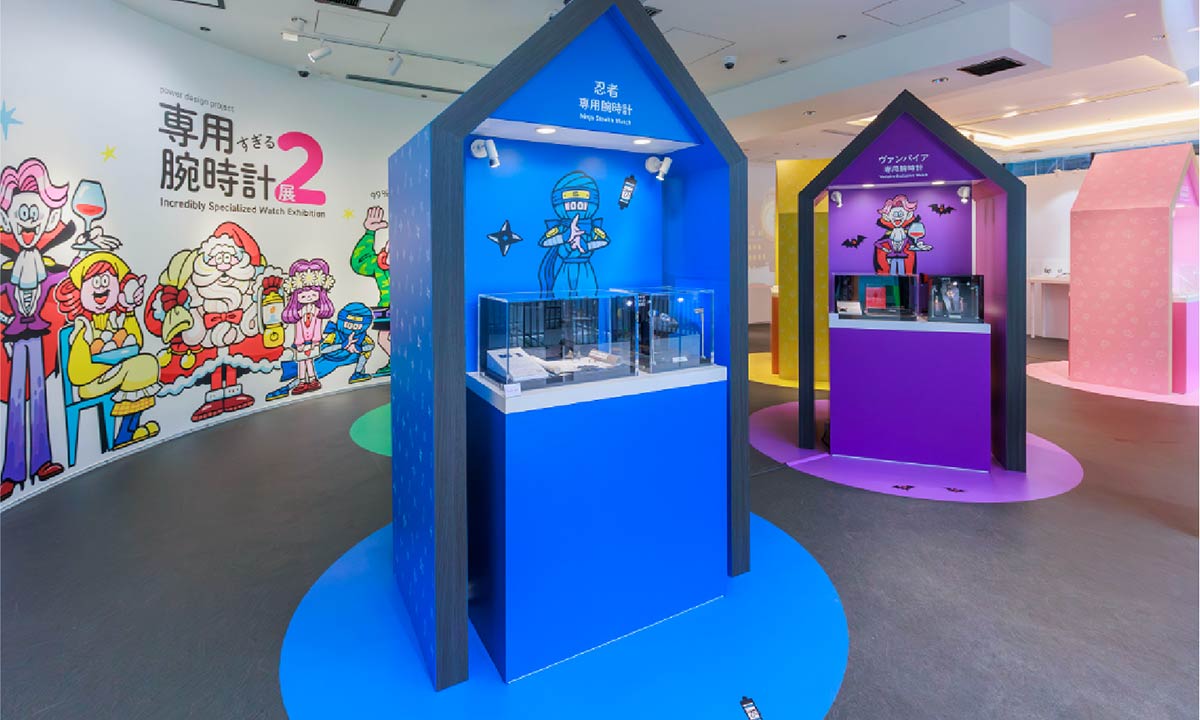
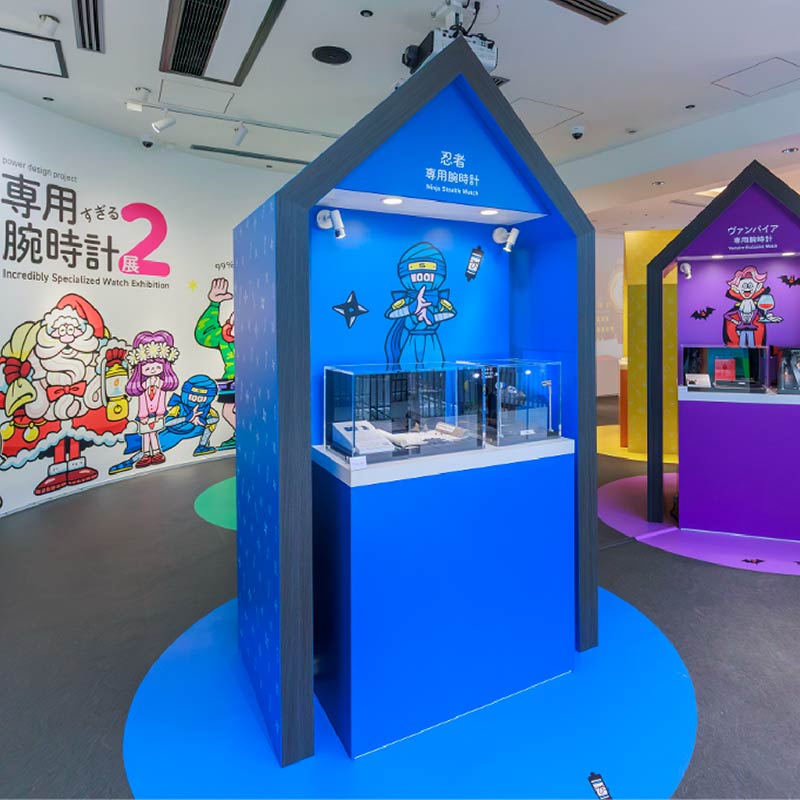
Kamata: After the great success of the Incredibly Specialized Watches Exhibition, we started brainstorming ideas for the third power design project and decided to create a sequel. But we knew we had to offer something different from the previous exhibitions. So, for Incredibly Specialized Watches Exhibition 2, we expanded the target audience beyond humans to include fantastical beings.
Handa: Like the Santa Claus Specialized Watch or the Vampire-Exclusive Watch?
Kamata: Exactly. Since many of our visitors come from overseas, we thought it would be interesting to focus on targets that are universally recognized worldwide.
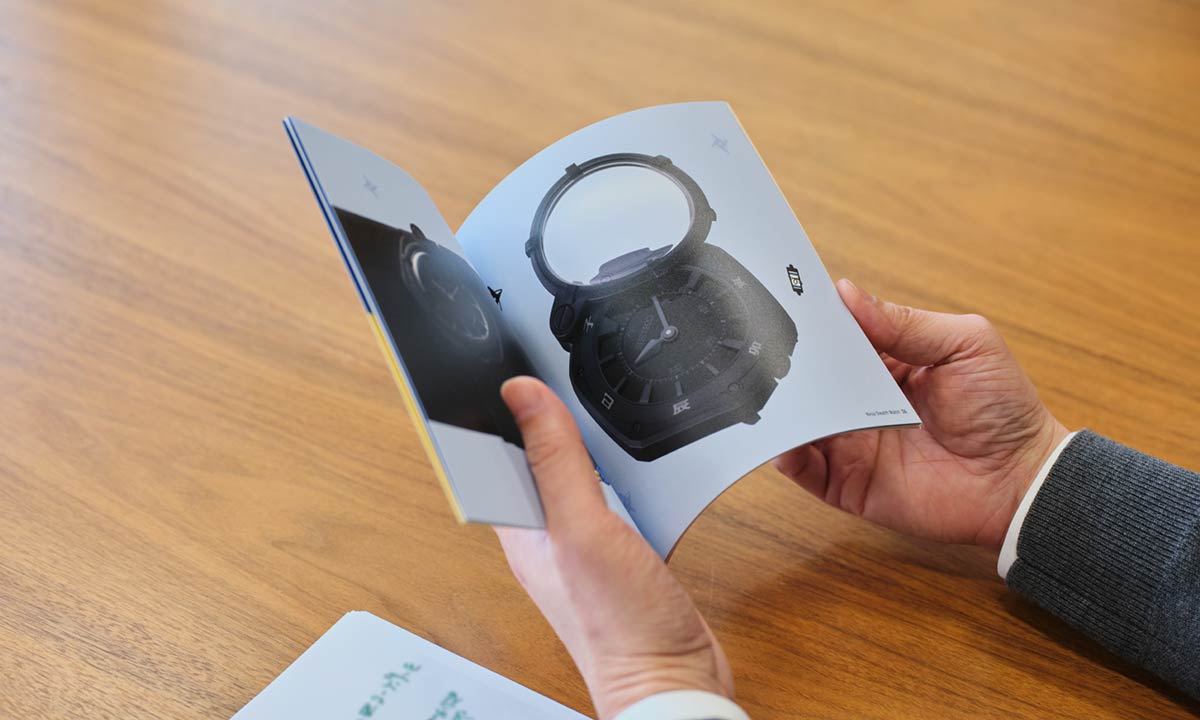
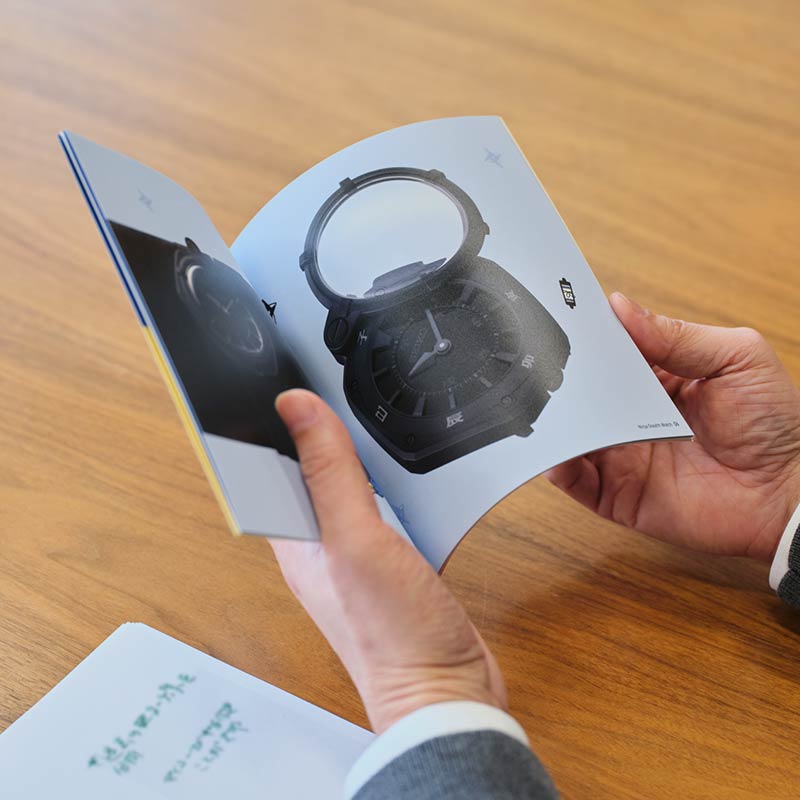
Kubo: So, the proposals that were rejected last time were being revamped and reintroduced.
Kamata: Some designers have a clear vision of what they want to pursue as their life’s work. Usually, ideas start from a given theme, but what’s interesting here is that they were working in reverse—trying to fit what they originally wanted to create into a theme.
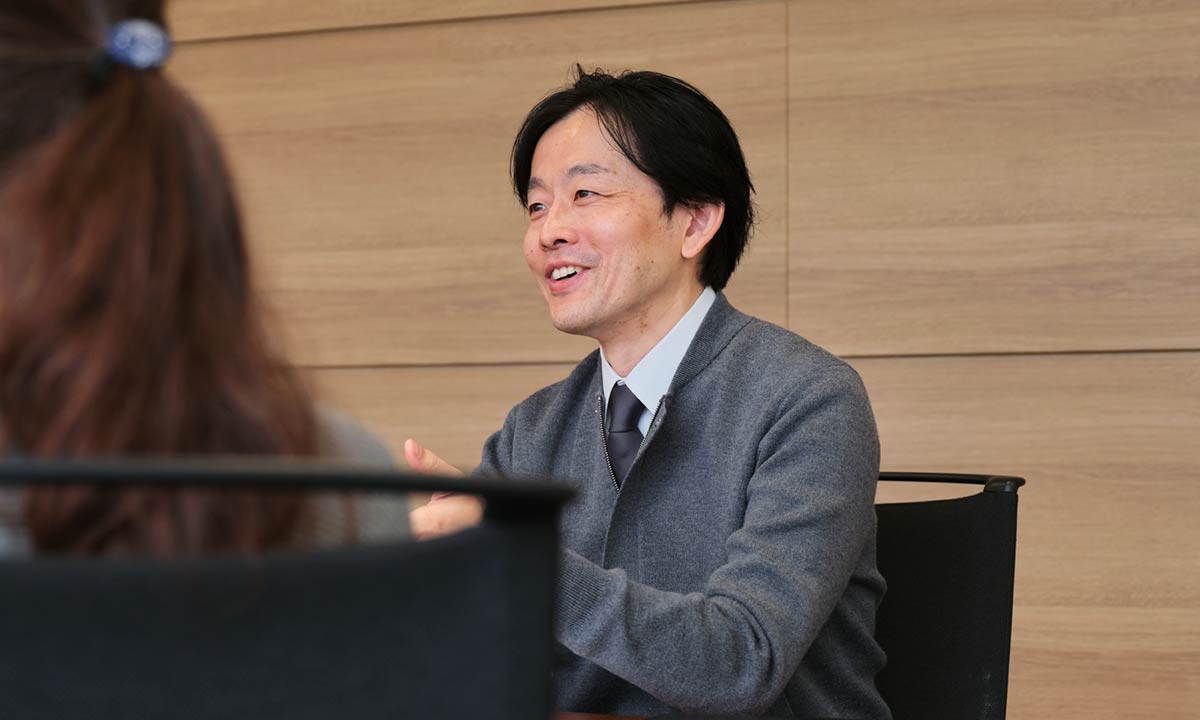
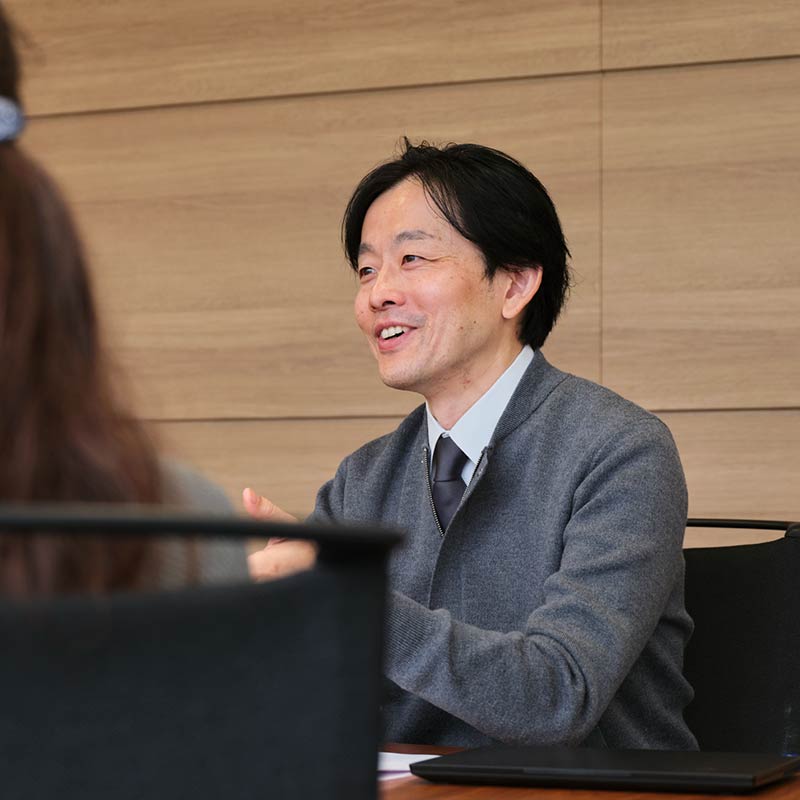
Kamata: Several designers whose designs were exhibited last time also had their designs selected for this exhibition. Interestingly, some visitors who had attended the previous exhibition were able to guess which watches were designed by which of those designers. We were surprised to see how clearly each designer’s individuality came through.
Handa: That’s amazing. Those visitors must be pretty sharp too!
Kamata: One design that sadly wasn’t selected but left a strong impression on me was a watch for kendama enthusiasts. (Kendama is a traditional Japanese cup-and-ball toy.) As the name suggests, it came with a kendama that you could actually play with, but it didn’t meet the necessary standards for shock resistance and other factors, so it wasn’t chosen.
Handa: Even if the idea is brilliant, if it can’t be turned into a real product, it won’t make the cut. That’s a big difference from past power design projects.
Kubo: Looking back, it was pretty amusing to see a group of grown adults seriously debating whether a watch for kendama enthusiasts was actually interesting—and if it could even work as a watch.
The future of the power design project
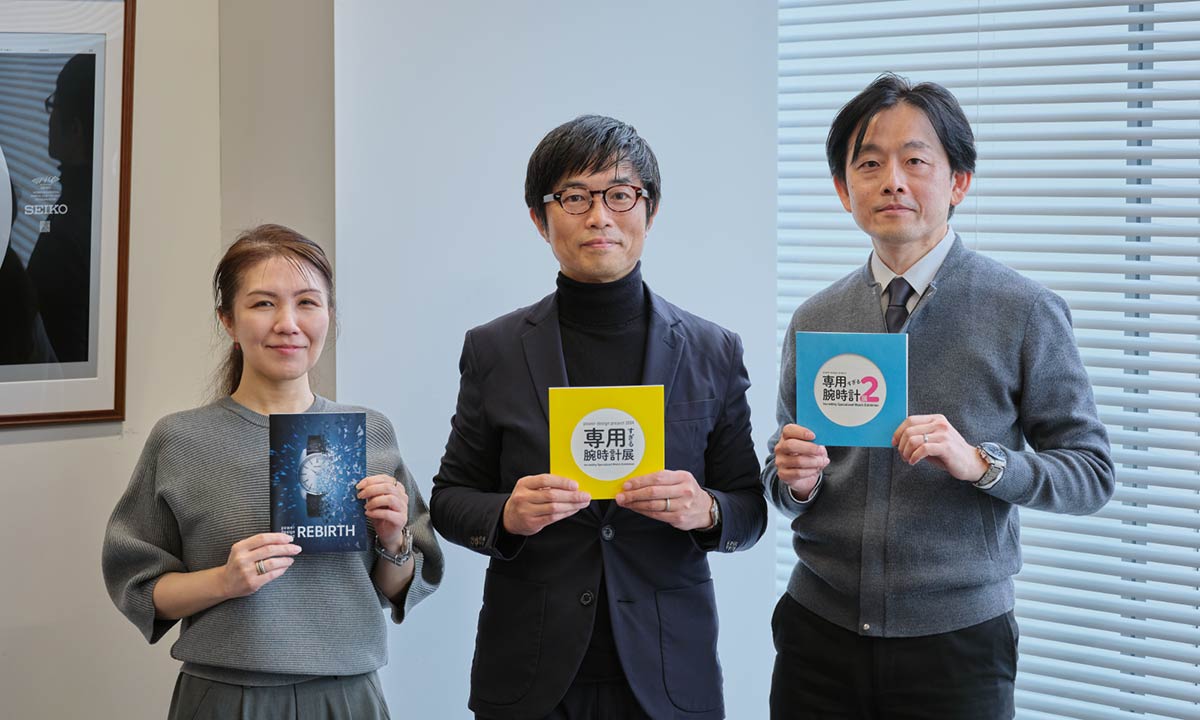
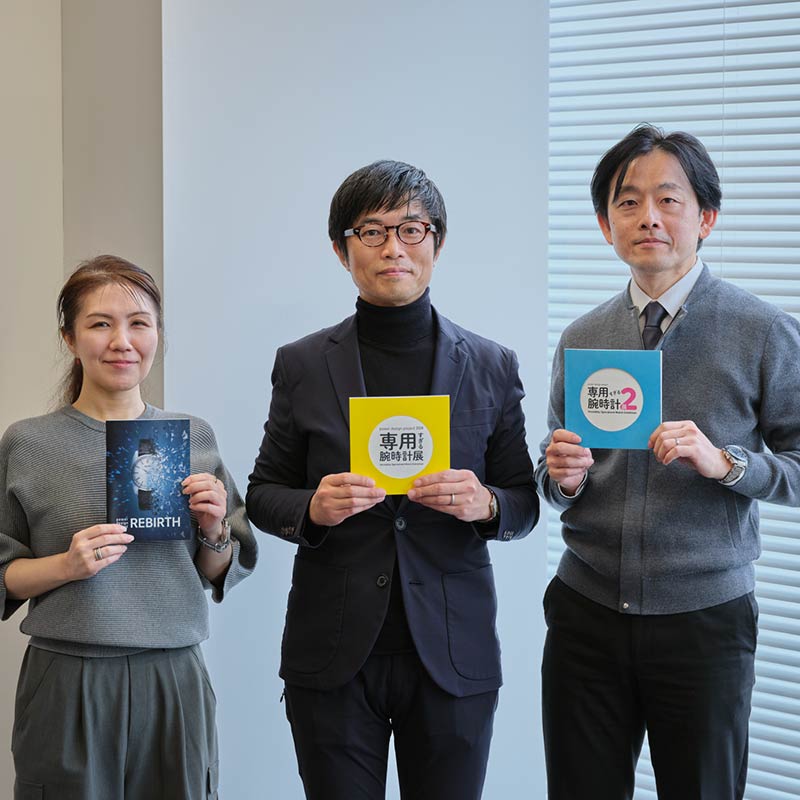
Kamata: Going forward, I think Forest of Mechanisms and the power design project will likely become the main pillars of our Seiko Seed activities.
Kubo: Before we began these projects, watch exhibitions mostly appealed only to watch enthusiasts. But this time, we managed to engage people who had never shown much interest in watches before. That, for us, was the most rewarding part.
Handa: We also held workshops during the exhibitions, giving people a chance to engage with their hands—and that proved to be a great addition. At Seiko, we’ll continue to value hands-on experiences that convey the appeal of watches, just as with our Toki-iku (Time Education) activities, where children learn the importance of time.
Kamata: Some of the activities we carried out through Seiko Seed have even started to travel overseas. I hope we can create more opportunities for international visitors to experience watches firsthand and discover their appeal.
Handa: I’m excited to see the power design project expand beyond Japan. There’s so much potential.
Seiko Seed will keep moving forward with new activities—we hope you’ll continue to support us along the way.

